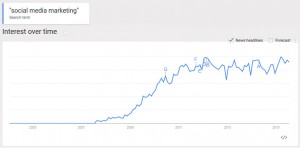When the number of coronavirus cases in the US went through the roof and people were compelled to stay home, Netflix saw a surge in its number of subscribers. Even as profits and stock values crater across industries, it is only natural that tech giants, especially those in the area of social networking, see their fortunes boom.
For a long time, the big tech giants have become tyrants, murdering startups in cold blood and acquiring recalcitrant ones in their infancy, all the while getting themselves mired in anti-trust attritions. As the world economy charts a new course in the coming months, the tyranny is bound to get even worse. Do new startups stand a chance?
As we’ve all come to attune ourselves to the fact that the world is facing an economic apocalypse due to the pandemic’s effect, it should be noted that one of the worst recipients of the crisis is startup founders whose children are still being fostered to walk.
These founders face a two-pronged attack. The first springs from the fact that a lot of people worldwide are taking a financial hit, some of them are potential early adopters of startup services. Second, if the startup owners have just launched shortly before the lockdowns began, they might have incurred a financial injury that left them vulnerable.
Beset by this in the same world where the big guns can be unforgiving, the million-dollar question for entrepreneurs now is: How do you failproof your business against post-COVID-19 economic reality?
To answer that question, I research to see what business models have stood the test of time and are likely to remain effective under recent circumstances. I list, with examples, three of them below.
1. Piggyback
Piggyback is defined as a low-cost market entry in which two or more firms represent one another’s complementary (but non-competing) product in their respective markets.
As far as growth strategy is concerned, piggybacking has courted the favor of growth strategy experts over the years. And it’s for a reason we can all agree on: piggyback has worked on almost all occasions where it was administered well.
After several months of rumored partnership, Spotify’s partnership with Facebook was later confirmed. Speaking on the partnership, Daniel Ek, Spotify’s CEO said, “Finding new music is always difficult, and that is why we created Spotify. We have spent the last few years building a service where you can find music. Add this to Facebook 800 million users and this will light up the world.”
While the eventual partnership wasn’t nearly as sexy as the media reports on it earlier made it look, this statement from Ek reveals the driving motive behind the partnership: get access to Facebook’s 800 million users (as it was back then), provide value for them and increase engagement and user retention for Facebook while also boosting Spotify’s customer base.
Spotify isn’t the only one. Paypal found its foot in the market by piggybacking on eBay before getting kicked out, being brought in again, and eventually getting acquired.
And whether that’s Spotify leaning on Facebook’s audience to gain traction or PayPal addressing a pain point for the back-end users on eBay, you have a precedent to follow.
Be careful, though. Not all stories of piggybacking have gone well. When piggybacking, piggyback with caution, try to understand your relationship with your host network and pursue strategy accordingly.
2. Customer-funded business
For the first time ever, author John Mullins provides a rare insight into how most disruptive businesses in the modern world were built, and it is counterintuitive to your VC/angel investor fundraising bias.
At the heart of this business model is a simple idea that you do not always need VCs as much as you think. In some instances, you do not need them at all.
Taking us back to what savvy entrepreneurs did before VCs manage to grab the spotlight, Mullins’ dive into the customer-funded business model shows that it isn’t just a model that you will love, it is also one that VCs will thank you for if you ever need them again. And he hints, with satisfying lucidity, why raising equity at the outstart is “an exceedingly bad idea.”
“It’s how Michael Dell created one of the twentieth century’s most prominent success stories and Mel and Patricia created Banana Republic, another customer-funded phenomenon,” says Mullins.
What’s more, even a more recent Silicon Valley success, Airbnb, is a customer-funded business.
But advising you not to pander to VCs isn’t particularly the idea of this piece. It is about how to fool-proof your business against what’s coming after Covid-19, the unknown unknowns, a completely new economic reality. Looking forward to the coming days, the new economic reality will influence how investors do business, much as it will in other sectors.
So now as you strive to keep your head above water, customer-funded business models give you an opportunity to get two for one: while it originally comes with its irresistible perks, it also serves the purpose of launching an MVP.
3. Owned media
Ever since word of mouth turned to word of mouse, creating an audience of your own has become quite easy. Not to say getting attention is easy, but businesses that sell attention are currently leading the pack.
Think of it this way: SEO for your website means you can find your buyers on Google without paying Google a dime to bring them to you. Attracting large followers on Twitter means you do not need to pay Twitter before creating a community around your business. And so is starting a podcast and letting podcast platforms take your voice and your product to the right audience.
Of course, what you can learn with most SaaS companies today is the fact that when venturing into a business with very little cash, the emergence of search engines and social networking platforms can help bring your business to the right audience.
But starting your own community is not the only way of doing this. Working with American Apparel, the genius author, Ryan Holiday, tells a story of how he gave things to influencers to use for free. Not only did those Greek gifts brought the company direct customers as a result, but they also generated a sort of free PR for American Apparel’s new products.
This post gives you an idea of how the founders of Crazyegg grew their user base to 100,000 with a paltry budget of $ 10,000. Examples abound.
After building a product from the ground, what other aspect takes the most budget of startups? Getting people to know and to buy their product, of course.
If your business faces a financial headwind in the post-coronavirus economy, allocating your tight budget to other things while strategically building a market base at almost free of charge might be all you need to get back on the track.
Final words
In 1835, scientist Charles Darwin visited the Galapagos island. During his research, Darwin Observed, “It is not the strongest of the species that survives, nor the most intelligent that survives. It is the one that is most adaptable to change.”
In the coming weeks, months, and years, a new normal — a new abnormal, really — is coming, and only those who are willing to adapt will scale through. Adapting, as we all know, requires creativity, it requires continuous newness and innovation.
Lucky for you, there is always a model to copy in the modern days. Whether you are going to copy the strategies that have worked in the past or develop a new one, these timeless business models will help you set about your business the right way in the post-COVID-19 economy.
Business & Finance Articles on Business 2 Community(45)





